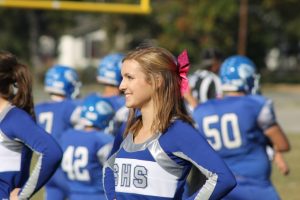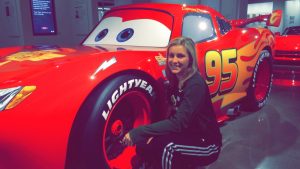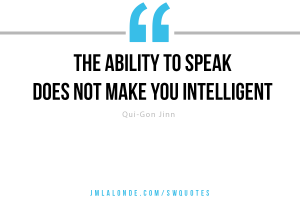- Woo – “winning others over”
- Strategic – easily sort through clutter and see alternative options
- Ideation – originality/multi perspectives
- Adaptability – lives in the moment and discovers future one choice at a time
- Communication – brings ideas and events vividly to life with clear portrayal to a captivated audience
After taking the Strengths Finder Assessment, I was able to see and recognize how my strengths play apart in my life. Although on the daily level I do not see every one of them being used aggressively or on a large scale, but I do see how I subconsciously use these on a smaller scale every single day. From meeting new people everyday on campus, to having to solve minor problems that occur in my day, I am able to put each of my strengths to the test.
A time in which I have had to use my strengths in a leadership position would definitely be my senior year of high school as the Head Cheerleader. COMMUNICATION is a HUGE deal within the squad and it was important that I was able to speak my mind and communicate between the girls and our sponsor. I needed to be able to clearly explain and bring my ideas to life in order to accomplish our common goals. IDEATION also came into play for the squad, especially during our homecoming week. I needed to have the creativity and originality to come up with the theme and activities of the week as well as be mature enough to see everyone else’s take on the event. Being the head cheerleader meant that I needed to take others perspectives into thought in order to be a good leader. I was made sure that all ideas were taken into consideration before making a final decision. STRATEGIZING an entire squad can be hectic at times, but as it being one of my strengths I was able to take the challenges that came against the squad and sort through the clutter. I found alternate options for any complications and had to be creative in order to find the best routes to move us forward as a squad. ADAPTABILITY goes hand in hand with the strategic element. While strategizing challenges that arose, I was able to sort through the clutter and adapt at a moments notice to ensure that everything would run smoothly. I knew that being in certain environments with the squad would bring up complications and the future was never fixed. Knowing that I had to take the squads future one choice at a time helped me to become the leader I am. WOO, the woo aspect of cheerleading is the basis of any leadership position. If I was not able to “win others over,” I would not have been the head cheerleader. Bringing energy to a social situation is important as a leader but definitely as a cheerleader, our soul purpose is to bring energy to large crowds. Along with bringing energy to social situations and crowds, I was able to bring energy to others, especially to draw the squad out of their shells and bring them together as one.

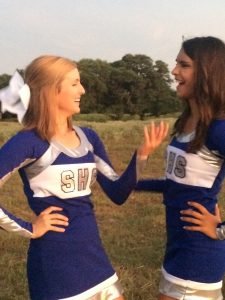
Totally a candid…right?
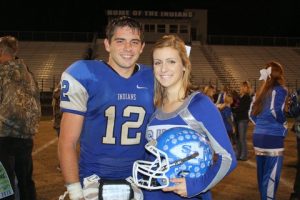
definitely not an ex boyfriend…

8 years of tryouts :))

*insert my high school catch phrase* “WINNER WINNER, CHICKEN DINNER”

SQUAD GOALS amirite?

Galveston, TX…isn’t it BEAUTIFUL?!?

“yeah, I babysit”
yeah, well call me when you’ve taken care of over a 100 small screaming people :)) …but I honestly LOVE it!! <3
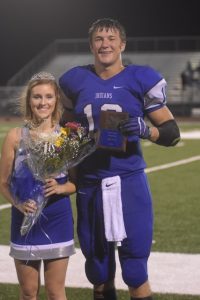
FOOTBALL SWEETHEART
Fun Fact: this guy actually fractured my wrist the night before graduation.

*I’m on the left*
POP QUIZ (out of state students only)
What are those ribbons hanging from our jerseys called??

MY LAST GAME *insert crying emoji*



